I earn commissions from my affiliated links. Please see my disclosure policy for more details.
Montessori Practical Life activities play a fundamental role in a preschool classroom, fostering independence, fine motor skills, concentration, and overall development. One such engaging and hands-on activity is card sewing, which combines creativity with practical skills.
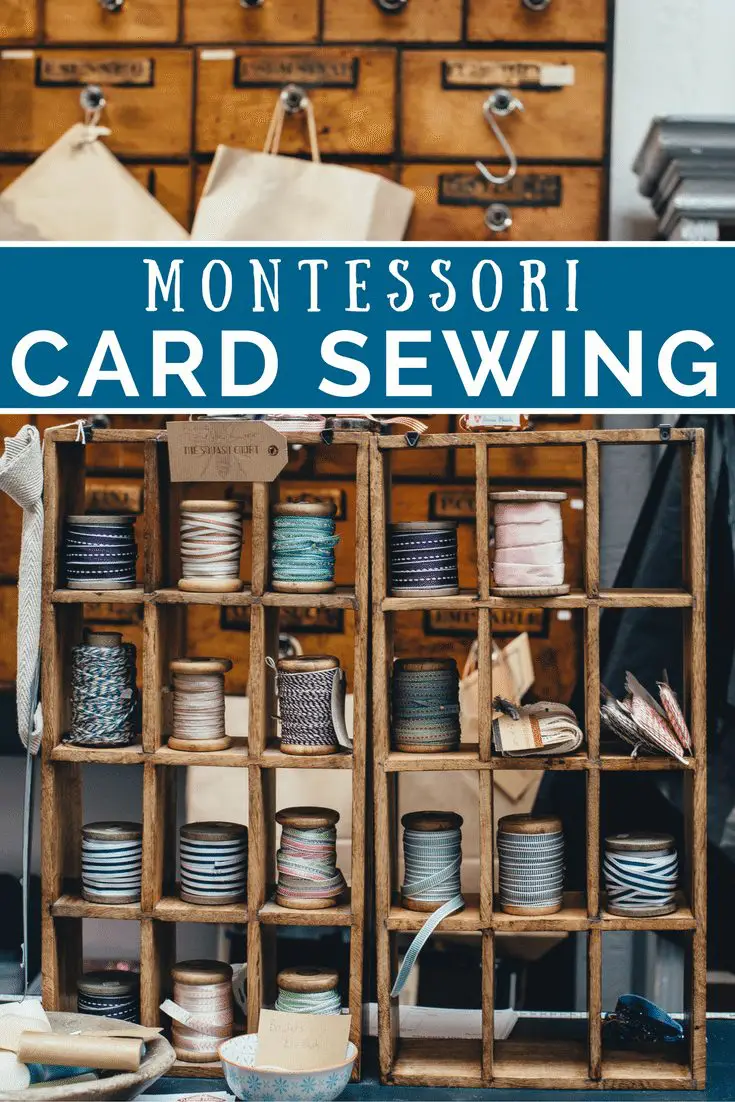
Card sewing activities involve using a needle and thread to sew decorative patterns or designs on cards made of stiff paper or cardstock. These activities provide preschoolers with an opportunity to practice hand-eye coordination, fine motor control, and concentration while creating beautiful, tactile artwork.
Benefits of Card Sewing
The benefits of card sewing activities in the Montessori classroom are numerous:
- Fine Motor Development: Card sewing enhances fine motor skills, finger dexterity, and hand-eye coordination as children manipulate the needle and thread through the pre-punched holes.
- Concentration and Focus: Engaging in card sewing requires concentration and focus, fostering the development of sustained attention and focus in young children.
- Creativity and Self-Expression: Through card sewing, children have the opportunity to express their creativity and create unique designs while exploring color combinations and different stitch patterns.
- Independence and Confidence: As children gain proficiency in card sewing, they develop a sense of independence and accomplishment. The ability to complete a project from start to finish boosts their confidence and self-esteem.
- Practical Life Skills: Card sewing is a practical life activity that introduces children to basic sewing skills. These skills can be further applied in real-life situations, such as sewing buttons or mending garments.
In the Montessori classroom, card sewing activities are carefully introduced and guided to ensure the child's success and enjoyment. Here's how card sewing can be implemented in the preschool classroom:
Card Sewing Lesson
Invite the child, have the child retrieve the rug, and then take the basket to the rug for the sewing activities.
Montessori Practical Life: Card Sewing Activities
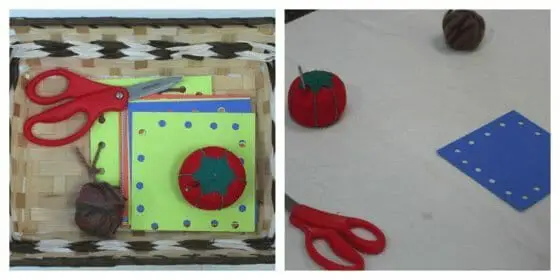
Identify & remove materials from the basket: “Scissors. Sewing Card. Yarn. Needle.”
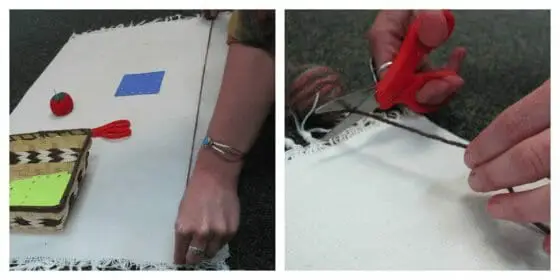
Have the child measure yarn using the edge of the rug. Cut yarn.
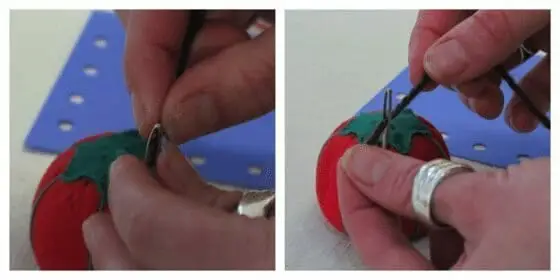
Thread the needle slowly and carefully. Make sure the child is watching closely. Let the child know that he may ask for help if he needs it in this step.
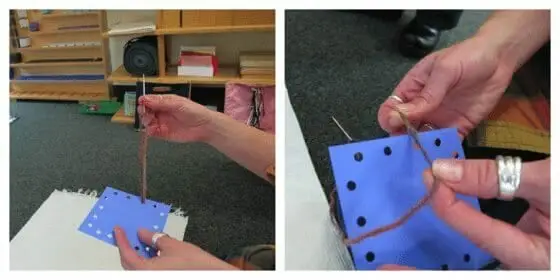
- Pick up the card.
- Ask the child which hole he thinks we should start sewing.
- Thread the needle through the hole, making sure the child is watching closely.
- Tie a knot.Tying a knot is an important skill that can come in handy in many different situations. Whether you're needing to tie up packages, secure items for storage or transport, fasten something closed, hang items from a hook or peg, and much more – knots are the perfect way to do it. Knowing how to tie several types of knots can help save time when
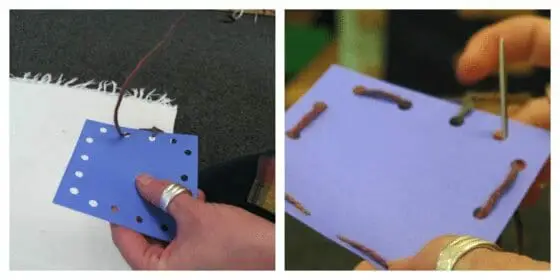
- Turn the card over and finish pulling the yarn through the hole.
- Indicate to the child that you are on the side where the yarn comes through the card.
- Continue sewing the card.

- Tie the two tails.
- Trim yarn.
- Cut the needle off the yarn.
- Take scraps to garbage or scraps basket.
- Replace the needle with the holder.
- Ask the child: “Would you like a turn?”
If you're looking for materials for your home or classroom, Montessori Services offers great card sewing and lacing works for purchase at a reasonable price.
By incorporating card sewing activities into the preschool classroom, Montessori educators provide children with an engaging, hands-on experience that promotes fine motor skills, creativity, and independence. Through these activities, children develop essential life skills while expressing their unique artistic abilities.
